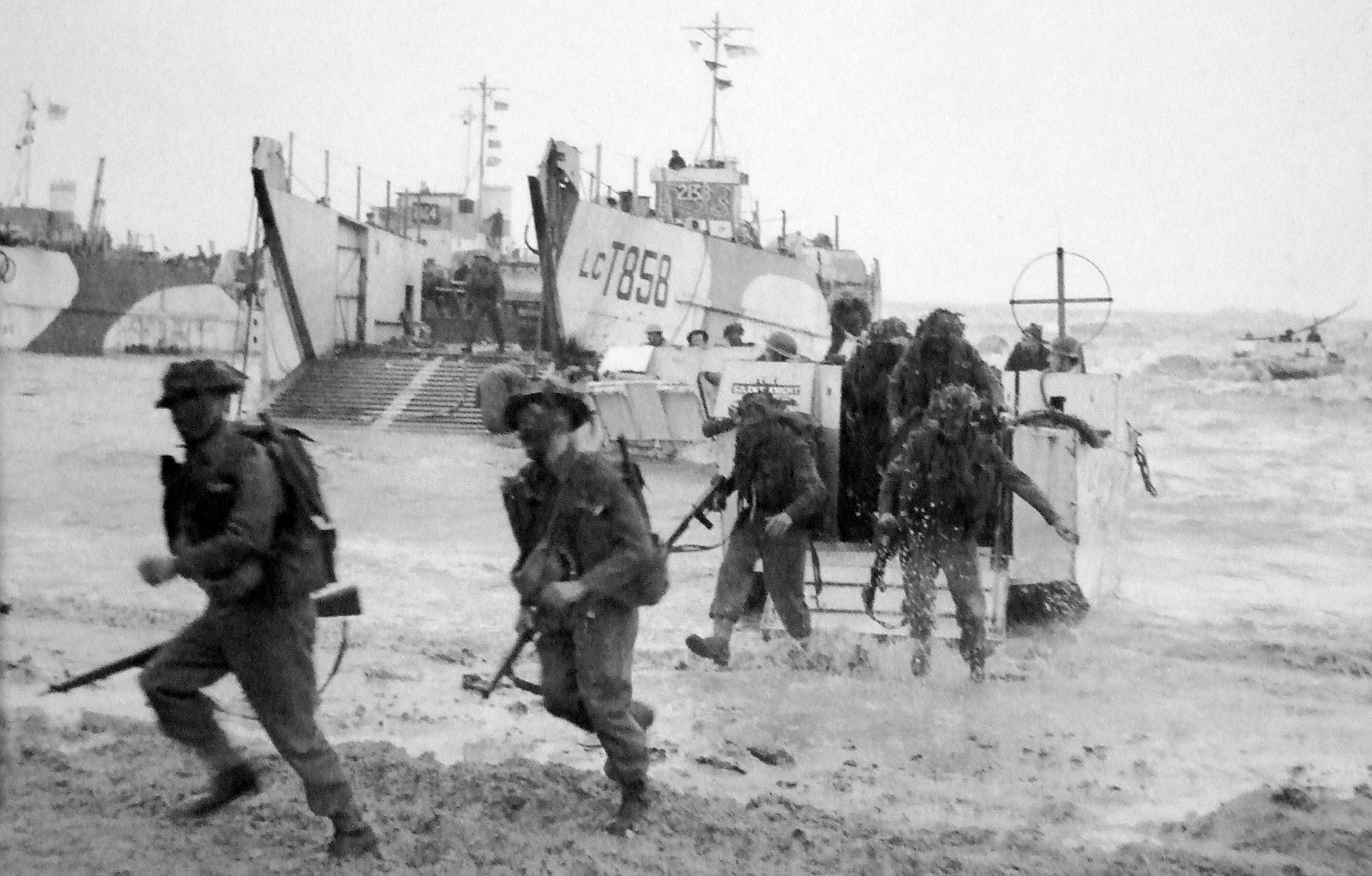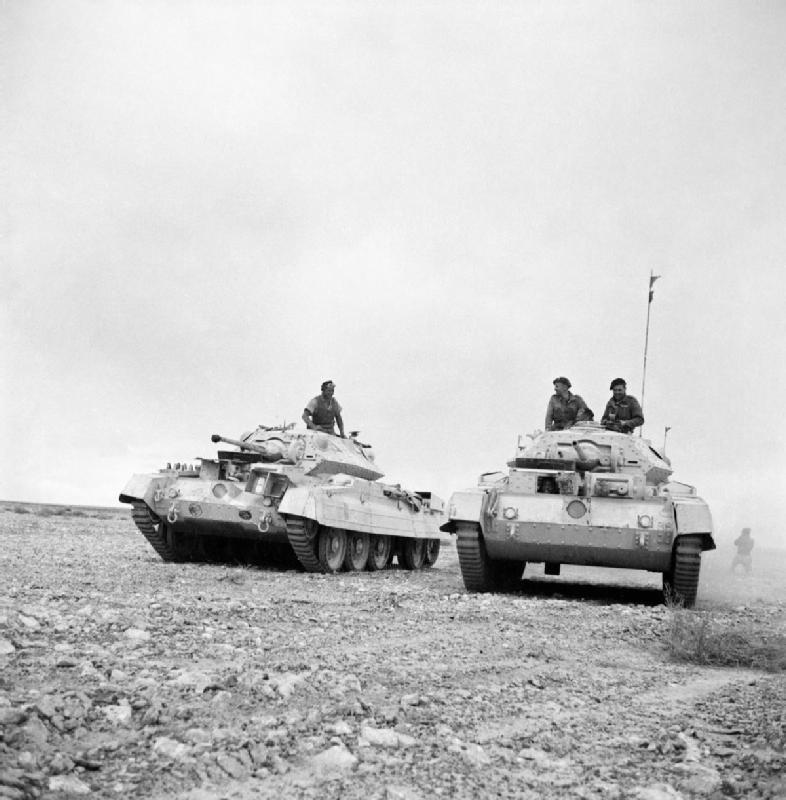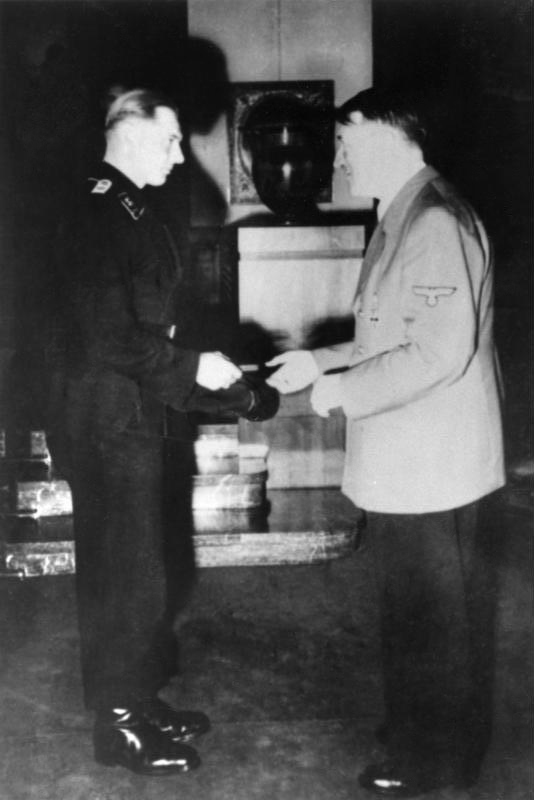|
Battle Of Villers-Bocage
The Battle of Villers-Bocage took place during the Second World War on 13 June 1944, one week after the Normandy Landings, which had begun the Western Allies' conquest of German-occupied France. The battle was the result of a British attempt to improve their position by exploiting a gap in the German defences west of the city of Caen. After one day of fighting in and around the small town of Villers-Bocage and a second day defending a position outside the town, the British force retreated. The Allies and the Germans regarded control of Caen as vital to the Normandy battle. In the days following the D-Day landings on 6June, the Germans rapidly established strong defences in front of the city. On 9June, a two-pronged British attempt to surround and capture Caen was defeated. On the right flank of the British Second Army, the 1st US Infantry Division had forced back the German 352nd Infantry Division and opened a gap in the German front line. Seizing the opportunity to bypass the G ... [...More Info...] [...Related Items...] OR: [Wikipedia] [Google] [Baidu] |
Operation Perch
Operation Perch was a British offensive of the Second World War which took place from 7 to 14 June 1944, during the early stages of the Battle of Normandy. The operation was intended to encircle and seize the German occupied city of Caen, which was a D-Day objective for the British 3rd Infantry Division in the early phases of Operation Overlord. Operation Perch was to begin immediately after the British beach landings with an advance to the south-east of Caen by XXX Corps. Three days after the invasion the city was still in German hands and the operation was amended. The operation was expanded to include I Corps for a pincer attack on Caen. On the next day, XXX Corps in the west pushed south to Tilly-sur-Seulles, which was occupied by the ; the village was captured and re-captured several times. I Corps began the eastern thrust two days later from the Orne bridgehead, which had been secured in Operation Tonga on D-Day. I Corps was also delayed by constant counter-attacks of the ... [...More Info...] [...Related Items...] OR: [Wikipedia] [Google] [Baidu] |
22nd Armoured Brigade (United Kingdom)
The 22nd Armoured Brigade was an armoured brigade of the British Army that saw service during and after the Second World War. The brigade was formed on the outbreak of war on 3 September 1939 from Territorial Army (TA) armoured regiments. It saw a considerable amount of action during the war, beginning with the Western Desert Campaign where it was engaged in Operation Crusader and at the Battles of Gazala, Mersa Matruh, First Alamein and Alam el Halfa. It then joined the 7th Armoured Division (the 'Desert Rats') for the Second Battle of El Alamein. It remained part of 7th Armoured for the rest of the war, including the campaigns in Tunisia, Italy and North West Europe. It continued in the postwar TA until 1956. The brigade's identity was re-established in the Regular Army between 1981 and 1993. Mobilisation 22nd Heavy Armoured Brigade (the 'Heavy' was dropped on 14 April 1940) was formed at the outbreak of the Second World War on 3 September 1939 with the mobilisation o ... [...More Info...] [...Related Items...] OR: [Wikipedia] [Google] [Baidu] |
I Corps (United Kingdom)
I Corps ("First Corps") was an army corps in existence as an active formation in the British Army for most of the 80 years from its creation in the First World War until the end of the Cold War, longer than any other corps. It had a short-lived precursor during the Waterloo Campaign. Napoleonic precursor Assembling an army in Belgium to fight Napoleon's resurgent forces in the spring of 1815, the Duke of Wellington formed it into army corps, deliberately mixing units from the Anglo-Hanoverian, Dutch-Belgian and German contingents so that the weaker elements would be stiffened by more experienced or reliable troops. As he put it: 'It was necessary to organize these troops in brigades, divisions, and corps d’armee with those better disciplined and more accustomed to war'. He placed I Corps under the command of the Prince of Orange and it was this corps that was first contacted by the advancing French at Quatre Bras on 16 June 1815. However, Wellington did not employ the corps as ... [...More Info...] [...Related Items...] OR: [Wikipedia] [Google] [Baidu] |
3rd Infantry Division (United Kingdom)
The 3rd (United Kingdom) Division is a regular army division of the British Army. It was created in 1809 by Arthur Wellesley, 1st Duke of Wellington, as part of the Anglo-Portuguese Army, for service in the Peninsular War, and was known as the Fighting 3rd under Sir Thomas Picton during the Napoleonic Wars. The division fought at the Battle of Waterloo, as well as during the Crimean War and the Second Boer War. As a result of bitter fighting in 1916, during the First World War, the division became referred to as the 3rd (Iron) Division, or the Iron Division or Ironsides. During the Second World War, the division (now known as the 3rd Infantry Division) fought in the Battle of France including a rearguard action during the Dunkirk Evacuation, and played a prominent role in the D-Day landings of 6 June 1944. The division was to have been part of a proposed Commonwealth Corps, formed for a planned invasion of Japan in 1945–46, and later served in the British Mandate of Palest ... [...More Info...] [...Related Items...] OR: [Wikipedia] [Google] [Baidu] |
Attrition Warfare
Attrition warfare is a military strategy consisting of belligerent attempts to win a war by wearing down the enemy to the point of collapse through continuous losses in personnel and materiel. The word ''attrition'' comes from the Latin root , meaning "to rub against", similar to the "grinding down" of the opponent's forces in attrition warfare. Strategic considerations Attrition warfare represents an attempt to grind down an opponent's ability to make war by destroying their military resources by any means including guerrilla warfare, people's war, scorched earth and all kind of battles apart from a decisive battle. Attrition warfare does not include all kinds of Blitzkrieg or using concentration of force and a decisive battle to win. The side that reinforces their army at a higher speed will normally win the war. Clausewitz called it the exhaustion of the adversary. A side that perceives itself to be at a marked disadvantage may deliberately seek out attrition warfare to neutr ... [...More Info...] [...Related Items...] OR: [Wikipedia] [Google] [Baidu] |
Royal Air Force
The Royal Air Force (RAF) is the United Kingdom's air and space force. It was formed towards the end of the First World War on 1 April 1918, becoming the first independent air force in the world, by regrouping the Royal Flying Corps (RFC) and the Royal Naval Air Service (RNAS). Following the Allied victory over the Central Powers in 1918, the RAF emerged as the largest air force in the world at the time. Since its formation, the RAF has taken a significant role in British military history. In particular, it played a large part in the Second World War where it fought its most famous campaign, the Battle of Britain. The RAF's mission is to support the objectives of the British Ministry of Defence (MOD), which are to "provide the capabilities needed to ensure the security and defence of the United Kingdom and overseas territories, including against terrorism; to support the Government's foreign policy objectives particularly in promoting international peace and security". The R ... [...More Info...] [...Related Items...] OR: [Wikipedia] [Google] [Baidu] |
Battle For Caen
The Battle for Caen (June to August 1944) is the name given to fighting between the British Second Army and the German in the Second World War for control of the city of Caen and its vicinity during the larger Battle of Normandy. The battles followed Operation Neptune, the Allied landings on the French coast on 6 June 1944 (D-Day). Caen is about inland from the Calvados coast astride the Orne River and Caen Canal, at the junction of several roads and railways. The communication links made it an important operational objective for both sides. Caen and the area to its south are flatter and more open than the bocage country in western Normandy. Allied air force commanders wanted the area captured quickly to base more aircraft in France. The British 3rd Infantry Division was to seize Caen on D-Day or to dig in short of the city if the Germans prevented its capture, which would temporarily mask Caen to maintain the Allied threat against it and thwart a potential German counter-a ... [...More Info...] [...Related Items...] OR: [Wikipedia] [Google] [Baidu] |
Salient (military)
A salient, also known as a bulge, is a battlefield feature that projects into enemy territory. The salient is surrounded by the enemy on multiple sides, making the troops occupying the salient vulnerable. The opponent's front line that borders a salient is referred to as a re-entrant – that is, an angle pointing inwards. A deep salient is vulnerable to being "pinched off" through the base, and this will result in a pocket in which the forces in the salient become isolated and without a supply line. On the other hand, a breakout of the forces within the salient through its tip can threaten the rear areas of the opposing forces outside it, leaving them open to an attack from behind. Implementation Salients can be formed in a number of ways. An attacker can produce a salient in the defender's line by either intentionally making a pincer movement around the military flanks of a strongpoint, which becomes the tip of the salient, or by making a broad, frontal attack which is held u ... [...More Info...] [...Related Items...] OR: [Wikipedia] [Google] [Baidu] |
Michael Wittmann
Michael Wittmann (22 April 19148 August 1944) was a German Waffen-SS tank commander during the Second World War. He is known for his ambush of elements of the British 7th Armored Division during the Battle of Villers-Bocage on 13 June 1944. While in command of a Tiger I tank, Wittmann destroyed up to 14 tanks, 15 personnel carriers and two anti-tank guns within 15 minutes for the loss of his own tank. The news was disseminated by Nazi propaganda and added to Wittmann's reputation. Wittmann became a cult figure after the war thanks to his accomplishments as a "panzer ace" (a highly decorated tank commander), part of the portrayal of the Waffen-SS in popular culture. Historians have mixed opinions about his tactical performance in battle. Some praised his actions at Villers-Bocage, while others found his abilities lacking, and the praise for his tank kills overstated. He is also known as the Black Baron. Early life and World War II Michael Wittmann was born in the village of Vog ... [...More Info...] [...Related Items...] OR: [Wikipedia] [Google] [Baidu] |
Obersturmführer
__NOTOC__ (, ; short: ''Ostuf'') was a Nazi Germany paramilitary rank that was used in several Nazi organisations, such as the SA, SS, NSKK and the NSFK. The rank of ''Obersturmführer'' was first created in 1932 as the result of an expansion of the ''Sturmabteilung'' (SA) and the need for an additional rank in the officer corps. ''Obersturmführer'' also became an SS rank at that same time. An SA-''Obersturmführer'' was typically a junior company commander in charge of fifty to a hundred men. Within the SS, the rank of ''Obersturmführer'' carried a wider range of occupations including staff aide, Gestapo officer, concentration camp supervisor, and Waffen-SS platoon commander. Within both the SS and SA, the rank of ''Obersturmführer'' was considered the equivalent of an ''Oberleutnant'' in the German ''Wehrmacht''. The insignia for ''Obersturmführer'' was three silver pips and a silver stripe centered on a uniform collar patch. The rank was senior to an ''Untersturm ... [...More Info...] [...Related Items...] OR: [Wikipedia] [Google] [Baidu] |
Schutzstaffel
The ''Schutzstaffel'' (SS; also stylized as ''ᛋᛋ'' with Armanen runes; ; "Protection Squadron") was a major paramilitary organization under Adolf Hitler and the Nazi Party in Nazi Germany, and later throughout German-occupied Europe during World War II. It began with a small guard unit known as the ''Saal-Schutz'' ("Hall Security") made up of party volunteers to provide security for party meetings in Munich. In 1925, Heinrich Himmler joined the unit, which had by then been reformed and given its final name. Under his direction (1929–1945) it grew from a small paramilitary formation during the Weimar Republic to one of the most powerful organizations in Nazi Germany. From the time of the Nazi Party's rise to power until the regime's collapse in 1945, the SS was the foremost agency of security, surveillance, and terror within Germany and German-occupied Europe. The two main constituent groups were the '' Allgemeine SS'' (General SS) and ''Waffen-SS'' (Armed SS). The ' ... [...More Info...] [...Related Items...] OR: [Wikipedia] [Google] [Baidu] |
SS Heavy Panzer Battalion 101
101st Heavy SS Panzer Battalion (german: Schwere SS-Panzerabteilung 101) was a German heavy tank battalion in the Waffen-SS during World War II. With the introduction of new Tiger II tanks in late 1944, the unit was renumbered as the ''501st Heavy SS Panzer Battalion'' (german: Schwere SS-Panzerabteilung 501). Operational history The battalion was created on July 19, 1943, as a part of the I SS Panzer Corps, by forming two new heavy tank companies consisting of Tiger I tanks and incorporating the 13th (Heavy) Company of the 1st SS Panzer Regiment. It was attached to 1st SS Panzer Division ''Leibstandarte'' and sent to Italy on August 23, 1943, where it stayed until mid-October. The 1st and 2nd company were then sent to the Eastern Front while the rest of the unit stayed in the West. With the anticipated Allied invasion of Western Europe approaching, elements of the battalion in the East were ordered to the West in April 1944. On June 1, 1944, the battalion was located near ... [...More Info...] [...Related Items...] OR: [Wikipedia] [Google] [Baidu] |



.gif)

